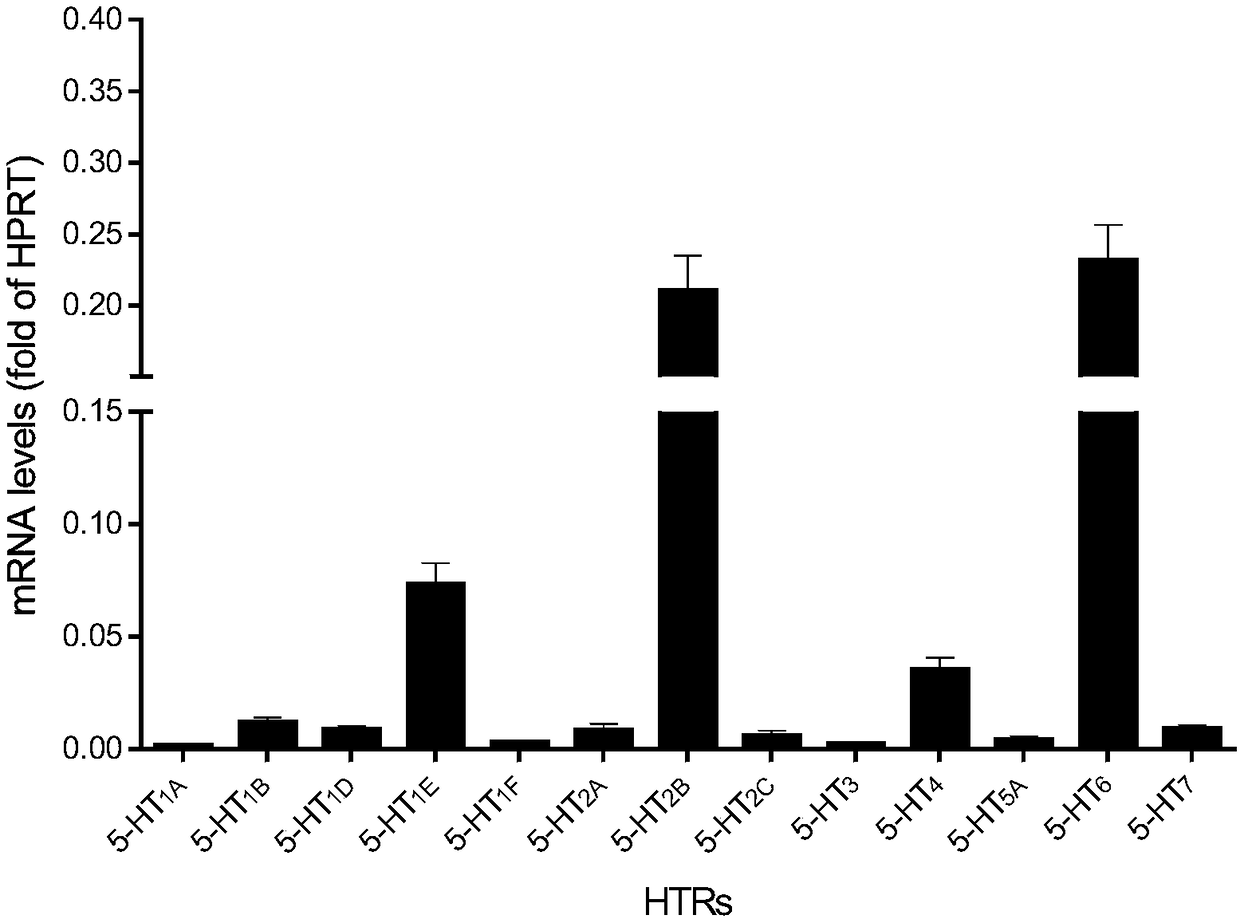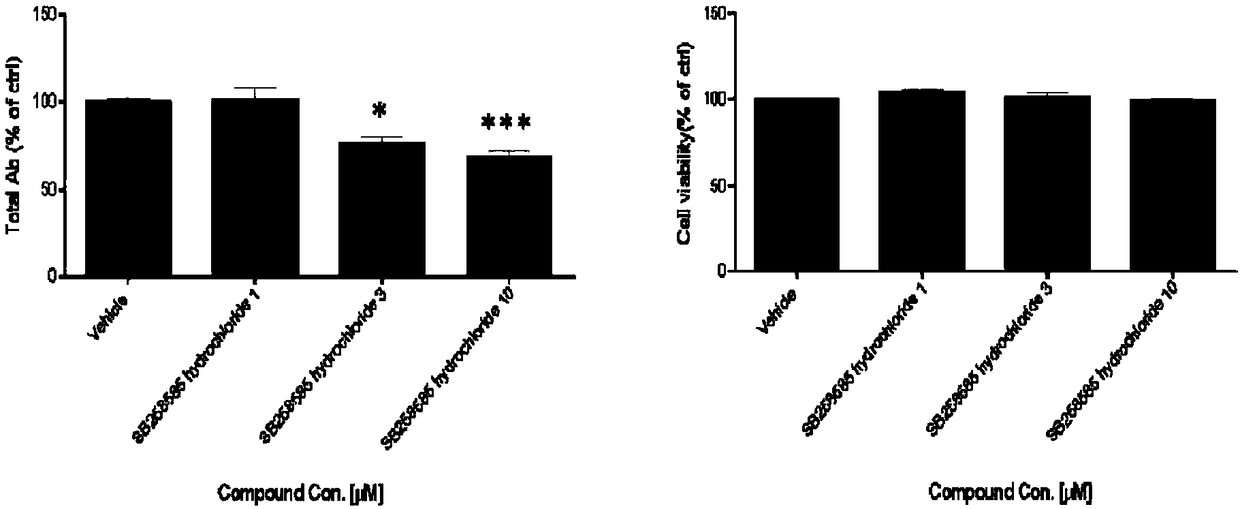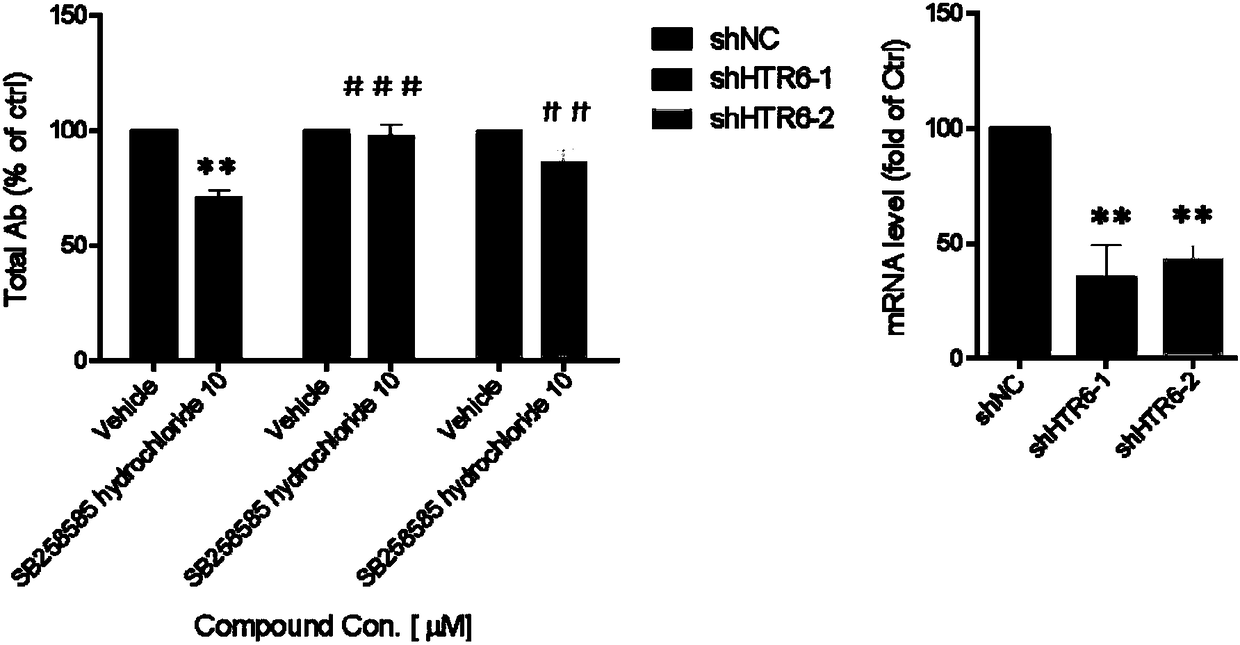Applications of small-molecule activating agent and antagonist of serotonin receptor subtype 6 in preventing and treating alzheimer disease
A technology of serotonin receptors and antagonists, applied in the field of life science research, can solve the problems of low homology of HTR sequences and affecting the process of AD, etc.
- Summary
- Abstract
- Description
- Claims
- Application Information
AI Technical Summary
Problems solved by technology
Method used
Image
Examples
Embodiment 1
[0085] Embodiment 1 QPCR detects the background expression level of serotonin receptor in the target cell line
[0086] SK-N-SH is a neuroblastoma cell line with constitutive low-level Aβ production. In order to confirm whether it is suitable for related research in this cell line, we firstly measured the background expression level of serotonin receptors in cells by QPCR. Tested. Such as figure 1 As shown, it was found that serotonin receptor subtype 6 was expressed at a higher level on the SK-N-SH cell line.
Embodiment 2 5
[0087] Example 2 Antagonists of serotonin receptor subtype 6 can reduce Aβ production in a dose-dependent manner
[0088] Using Aβ production experiments, we found that if figure 2 As shown, SB258585hydrochloride, an antagonist targeting serotonin receptor subtype 6, decreased Aβ production in a dose-dependent manner.
Embodiment 3
[0089] Example 3 The effect of SB258585hydrochloride on reducing Aβ production is dependent on serotonin receptor subtype 6
[0090] In order to investigate whether the effect of SB258585hydrochloride on reducing Aβ production is dependent on serotonin receptor subtype 6, we performed shRNA-mediated knockdown of serotonin receptor subtype 6 expression by lentivirus. Scrambled with random nucleotide sequence was expressed as a negative control, and the knockdown efficiency of shRNA-mediated serotonin receptor subtype 6 expression was detected by fluorescent real-time quantitative PCR. Such as image 3 As shown, the experimental results of fluorescent real-time quantitative PCR show that the viral transfection targeting serotonin receptor subtype 6 shRNA can cause its mRNA level to decrease by about 60%. Compared with the control group, after transfection of shRNA targeting the serotonin receptor HTR6 sequence, antagonist stimulation can still reduce Aβ production in the contro...
PUM
 Login to View More
Login to View More Abstract
Description
Claims
Application Information
 Login to View More
Login to View More - R&D
- Intellectual Property
- Life Sciences
- Materials
- Tech Scout
- Unparalleled Data Quality
- Higher Quality Content
- 60% Fewer Hallucinations
Browse by: Latest US Patents, China's latest patents, Technical Efficacy Thesaurus, Application Domain, Technology Topic, Popular Technical Reports.
© 2025 PatSnap. All rights reserved.Legal|Privacy policy|Modern Slavery Act Transparency Statement|Sitemap|About US| Contact US: help@patsnap.com



